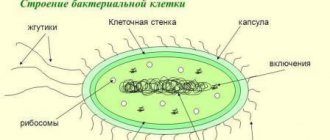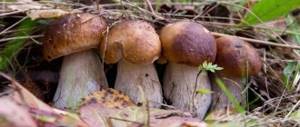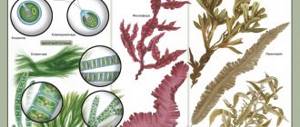Methodological development of a biology lesson on the topic: “Plant respiration”
Republic of Adygea,
Maykop, MBOU "Lyceum No. 19",
biology teacher of the highest category
Petrova Larisa Konstantinovna
Lesson on the topic “Plant respiration” (6th grade Federal State Educational Standard)
Lesson type:
combined (learning new material and primary consolidation)
Goals:
Didactic – create conditions for understanding and comprehending a block of new educational information by means of critical thinking; educational - organize the study and ensure that students understand the dependence of life processes on breathing; developmental - continue to develop the skills to establish cause-and-effect relationships, using the techniques of “I know, I want to know, I found out” and reading with stops; educational – to create conditions for enthusiastic learning, to cultivate a sense of pride in the joint result of cognitive activity.
Equipment:
- Pasechnik V.V. Biology. Bacteria. Mushrooms. Plants. 6th grade.-M., 2005.
- Korchagina V.A. Biology. Plants. Bacteria. Mushrooms. Lichens: Textbook for grades 6-7 of secondary school. – M., 1993.
- Didactic materials for organizing independent work.
- Tables “Stem”, “Leaf structure”.
During the classes
- Stages of challenge and goal setting
- Report on the topic of the lesson “Plant respiration” (write on the board).
- Students drawing up a diagram “What do I know about breathing”
All organisms breathe
Carbon dioxide is released
BREATH
Plants breathe
Oxygen is absorbed
- Discussion of the scheme
- Filling out the “ZHU” table, the “I know” column.
| I know | I want to know | Found out |
| Respiration is a property of all living organisms | ||
| When you breathe, oxygen is taken in and carbon dioxide is released. |
- A frontal conversation about what you can learn in class today and what you would like to know.
- Filling out the “I want to know” column.
| I know | I want to know | Found out |
| Respiration is a property of all living organisms | How do plants breathe? | |
| When you breathe, oxygen is taken in and carbon dioxide is released. | Why is oxygen needed? |
- Conception stage
- Demonstration of experience
, which proves that plants emit carbon dioxide when they respire.
Instructions for students
- Take three beakers; Place sprouted bean seeds in the first, soaked carrot roots in the second, and plant branches (for example, tradescantia) in the third.
- Close the glasses tightly with corks and place in a dark place.
- After a day, check whether the composition of the air has changed; to do this, lower a lit splinter into each glass.
Issues for discussion:
- Why does the candle go out?
- What gas does not support combustion?
- What can you conclude about breathing?
- Do all plant organs respire? Do the roots breathe?
- Discussion of the drawing
“An experiment demonstrating the need for air for roots to breathe” (see Equipment, 1, p. 156)
Issues for discussion:
1. Explain what the experience says?
2. Why is a spray gun used in the first option?
3. Why was oil poured into the second glass?
4. Why did the plant in the second glass die?
5. Why does a plant need oxygen?
- Comparison of student judgments with scientific information:
reading text No. 1; filling out the “Learned” column in the table (what oxygen is needed for).
Conclusion:
the root of the plant breathes; if the access of oxygen to the roots is stopped, the plant dies; the plant needs oxygen for metabolism, during which organic substances are destroyed and the energy necessary for the life of the plant is released.
- Technique “reading text with a stop”:
reading texts No. 2,3, discussion.
- Working with the table "ZHU"
— filling out the “Learned” column
- Independent work with text:
reading text No. 4; discussion.
Issues for discussion:
1. Why is lime water used, what properties does it have?
2. Why is the plant placed in the dark?
- Independent work with text No. 5
: reading, filling out the table “Features of the processes of respiration and photosynthesis”; frontal verification of the correctness of the task.
| Questions | Photosynthesis | Breath |
| 1.What gas is absorbed 2.What gas is released? 3.What time of day does it happen? 4.In which cells does it occur? 5.Importance for the plant |
Conclusion:
the processes of photosynthesis and respiration are interconnected: photosynthesis produces organic substances that are used in respiration.
- Stage of reflection and reflection
- Analysis of records.
- What new did you learn in this lesson?
- Filling out the ZHU table, column “Learned”:
| I know | I want to know | Found out |
| 1.When breathing, oxygen is absorbed and carbon dioxide is released | How do plants breathe? | Plants have respiratory organs, lenticels and stomata. |
| 2. Breathing is a property of all living organisms | Why is oxygen needed? | With the participation of oxygen, organic substances are destroyed and energy is released |
Homework:
studying a textbook paragraph (see Equipment, 1, paragraph 35), making notes in a notebook.
Application
Features of respiration processes in plants
Text No. 1
Oxygen is involved in the chemical processes of breakdown of complex substances, as a result of which the energy necessary to maintain the vital activity of the body, its growth, movement, nutrition, reproduction and many other processes is released.
Text No. 2
You know that the outside of the stem is covered with skin and cork. The skin and cork are integumentary tissues. Young (annual) stems are covered on the outside with a skin, which is then replaced by a cork. A plug is a dead (sometimes very thick) layer of cells filled with air, under which there are living cells.
Text No. 3
To carry out gas exchange, plants have special devices and organs. These are lentils and stomata. Lentils are loosely arranged bark cells through which the plant stem breathes. Stomata are found in the skin of the stem and leaf. They consist of two guard cells that periodically open and close to regulate the flow of air into the stem and leaves.
Text No. 4
Take a shoot of a plant that has at least 10-12 leaves. Let's put it in a glass of water placed on a plate, next to which there is another glass of clear water. Then we will close it all with a glass cover and place it in a dark cabinet.
Text No. 5
In the dark, plants cannot produce oxygen because photosynthesis stops. In a dark closet, plant leaves will only breathe, which means absorbing oxygen and releasing carbon dioxide. The carbon dioxide released by the leaves will cause limewater poured into a glass to become cloudy. The respiration of leaves does not stop in the light, since plants, like animals and humans, breathe around the clock - both in the light and in the dark (see Figure 118 “Experience showing the need for carbon dioxide for the formation of organic substances”) (Equipment, 1 , p.151).
Plan of notes on biology grade 6 Lesson 10. Plant respiration
Lesson 10. Plant respiration
Lesson objectives:
- continue to develop knowledge about the respiration of organisms as an integral part of metabolism; about plant respiration and its essence; about the role of stomata, lentils and intercellular spaces in gas exchange in plants;
- conduct biological experiments to study the vital processes of organisms and explain their results;
- teach students to apply knowledge about plant respiration when growing and storing crops.
Planned learning outcomes:
Subject: students become familiar with the breathing characteristics of plants; learn to determine the importance of respiration in plant life; master the ability to explain the role of stomata, lentils and intercellular spaces in gas exchange in plants.
Meta-subject: students master the basics of research, including the ability to observe the life of plants; learn, in the course of simple biological experiments to study the life processes of plants, to record, analyze and explain the results of experiments; work with different sources of information, find information about plant life processes in textbooks, popular science literature, biological dictionaries and reference books, the Internet and interpret it.
Personal: students develop cognitive needs based on interest in studying the life of plants, they form value and semantic attitudes towards the plant world, and become aware of the need to take care of plants and protect them.
Basic concepts of the lesson: stomata, lentils.
Student activities: working with the text and illustrations of the textbook, completing assignments in the workbook, collaborating with classmates when discussing the results of experiments.
During the classes
- Check of knowledge
- Testing knowledge about respiration as an integral part of metabolism, during which there is a constant exchange of gases between the body and the environment, about the characteristics of breathing in animals (individual and frontal survey).
- Checking the completion of tasks in the workbook.
- Learning new material
- Respiration of plants. The role of stomata, lentils and intercellular spaces in gas exchange in plants. The essence of plant respiration is the formation of energy used for life processes (teacher’s story with demonstration of experiments proving the release of carbon dioxide during respiration, presentation of the results of the experiment - task 6 for lesson 10 in the workbook).
- Application of knowledge about plant respiration when growing and storing crops (conversation).
- Fixing the material
1. A conversation about the similarity of respiration processes in plants and animals (explanation of the results of the experiments given on p. 110 of the textbook).
Breathing in animals
The importance of internal circulation for the body of animals, especially large ones, is very great. For animals such as protozoa or very small multicellular organisms, simple diffusion of oxygen, water or food molecules is often sufficient. However, there are limits and restrictions that are imposed by the laws of diffusion, and then special systems for the circulation of gases and liquids arise: respiration and blood circulation. Although these processes are interrelated, it is more convenient to consider them separately.
Respiration is the process of taking in oxygen and releasing carbon dioxide.
The above applies both to the whole organism and to intracellular processes. Aquatic animals extract oxygen from the water in which it is dissolved ( water respiration ), and terrestrial animals breathe oxygen from the atmospheric air, where there is immeasurably more of it ( air respiration ). These processes occur on respiratory surfaces - exchange membranes. Very small animals can receive oxygen directly through their body coverings, but most animals have special respiratory organs (Fig. 7).
Respiration is often called energy metabolism, since to obtain the energy needed by animals, the oxidation of food components with the help of oxygen is required. The substance ATP (adenosine triphosphate) plays an important role in the transfer of energy from nutrients (“fuel”) to energy-consuming metabolic processes.
| Rice. 7. Types of breathing surfaces |
Some animals can use the energy of organic compounds obtained without oxygen (anaerobic metabolism), but this route provides 10-20 times less energy than with the complete oxidation of food molecules.
As cells use oxygen to oxidize nutrients, CO2 is formed, which leaves the cells and is released through the body surface or respiratory organs. The water formed along with carbon dioxide is usually included in the body's total water supply. Most of the energy obtained through respiration is eventually converted into heat. Material from the site https://doklad-referat.ru
The main physical process that ensures the movement of oxygen from the external environment to the cells of the body is diffusion, i.e., the movement of dissolved gas in the direction of the concentration gradient - from high to low concentrations. CO2 moves along the concentration gradient in the same way, but in the opposite direction. Diffusion is often aided by blood circulation. The blood of many animals contains specialized proteins called respiratory pigments. They carry oxygen, reversibly binding it, and then giving it to places of consumption. This could be hemoglobin, hemocyanin, chlorocruorin, etc.
To meet their energy needs, most animals use the oxidation of food components. The process of releasing biologically useful energy from nutrients, mainly carbohydrates, is called respiration. Since this process occurs in the presence of oxygen, respiration is also called the consumption of O2 and the release of CO2. The methods for obtaining oxygen from water or air are different, therefore the respiratory organs of aquatic and terrestrial animals differ in their structure. Despite the fact that breathing in different groups of animals is carried out using different organs and apparatuses, the process itself is essentially the same in essence.
On this page there is material on the following topics:
A short note on respiration in animals
Zoology animal breathing
Animal breathing report
Animal breathing small report
Report on breathing in animals
Biology lesson in 6th grade "Life activity of living organisms."
Abstract
repeating and generalizing
lesson on the topic “Life functions of organisms”,
grade 6
According to the program of V.V. Pasechnik.
Target
: systematize and generalize students’ knowledge about the systems of living organisms, the features of their structure and life activity.
Lesson Objectives:
Educational:
—
systematize students’ knowledge about the basic life processes of living organisms;
— continue to form ideas about plants and animals as integral organisms based on generalizing knowledge about the relationships in the structure and functions of organs and organ systems;
To consolidate knowledge about the structural features of animal and plant systems depending on the function performed.
Educational:
-develop the concept of a plant as a living organism, the influence of environmental factors on the growth and development of plants;
- continue the development of basic biological concepts, elements of creative activity through immersion in solving problematic issues and involving schoolchildren in independent work of a partial search and research nature.
- promote the formation of skills to generalize, compare, highlight the main thing, draw conclusions, develop thinking and memory.
Educational:
- to cultivate love and respect for nature;
- develop the ability to work in a group, listen and hear others, respect for the opinions of comrades.
- promote interest in biology.
Equipment
: textbook V.V. Beekeeper “Biology. 5-6 grades”, personal computer, multimedia projector, presentation on the topic of the lesson, workbook for the lesson, handouts in groups.
Lesson type:
lesson of generalization and systematization of knowledge.
Forms of student work:
group, individual.
Time for each stage of the lesson:
Equipment
: textbook V.V. Beekeeper “Biology. 5-6 grades”, personal computer, multimedia projector, presentation on the topic of the lesson, workbook for the lesson, handouts in groups.
Pedagogical technologies, techniques and methods used in the lesson: rating - lesson,
group technology, brainstorming (problematic tasks), testing, use of ICT.
Lesson structure:
During the classes:
Teacher: for six months we have been studying that plants and animals are living organisms. Remember what characteristics do all living organisms have?
Students, together with the teacher, recall the signs of living organisms
-respiration (absorption and release of gases)
- nutrition (absorption of various substances, assimilation and their restructuring into substances of the body);
-reproduction (reproduction of one’s own kind);
-growth (increase in the mass and size of organisms);
-development (qualitative changes in organisms);






